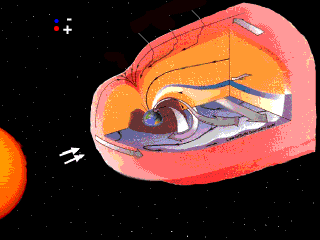This animation shows how particles from the Sun are diverted by the Earth's magnetic field.
Movie provided courtesy of Professor Patricia Reiff, Rice University Connections Program
How Does the Earth's Magnetic Field Protect Us From Space Radiation?
Dangerous particles are not able to penetrate to the Earth's surface but are forced by the magnetic field to move around the Earth. Particles gain entry through the cusps that are shaped like funnels over the polar regions or they gain entry far downstream from the Earth. The particles that enter downstream travel toward the Earth and are accelerated into the high-latitude ionosphere and produce the auroral oval light shows. Since the most intense auroras occur at solar maximum, it was once thought that the Sun hurled material out during these raised times of solar activity and that that material funneled directly into the polar cusps. However, we now understand that the electrons that cause the auroras come in downstream or from the Earth's magnetic tail. These electrons that enter at the magnetotail are energized locally within the magnetosphere.
Other higher energy particle radiation that could pose a danger to life here on Earth, is forced to drift around the Earth within two large donut-shaped regions called the radiation belts. Invisible magnetic fields are the reason that particle radiation moves in this way. Click here for basic facts about particle motions in the Earth's magnetic field.
You might also be interested in:
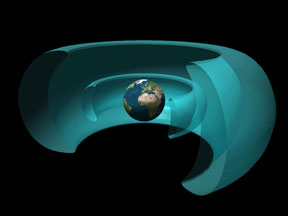
The Earth's radiation belts are one component of the larger and more complex system called the magnetosphere. The radiation belts of the Earth are made up of energetic, electrically charged particles or
...more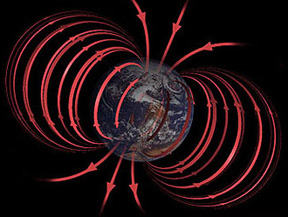
Magnetic fields can cause particles to move in these three ways: Spiral Motion Bounce Motion Drift Motion
...more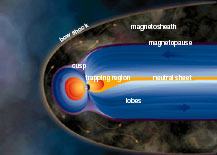
The Earth has a magnetic field with north and south poles. The magnetic field of the Earth is enclosed in a region surrounding the Earth called the magnetosphere. As the Earth rotates, its hot core generates
...more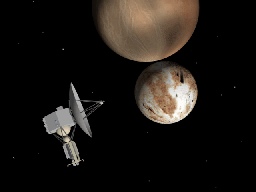
AU stands for Astronomical Units. Distances in space are too large to measure in Earth standards like miles or kilometers. For distances too large to measue in AU, we use light years. A light year is the
...more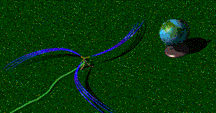
The solar wind is formed as the Sun's topmost layer blows off into space carrying with it magnetic fields still attached to the Sun. Gusts and disturbances form in the solar wind associated with violent
...more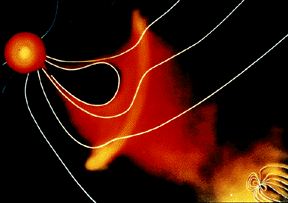
For a planet to be affected by a blob of material being ejected by the sun, the planet must be in the path of the blob, as shown in this picture. The Earth and its magnetosphere are shown in the bottom
...more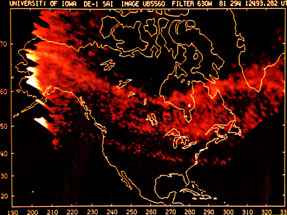
The aurora we are most familiar with is the polar aurora. This is what people are referring to when they speak of the northern or southern lights. But there are other less-known auroral activity, such
...more
